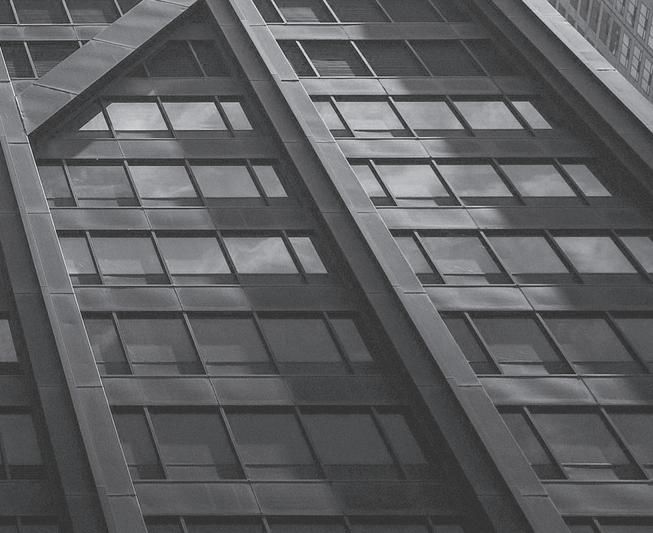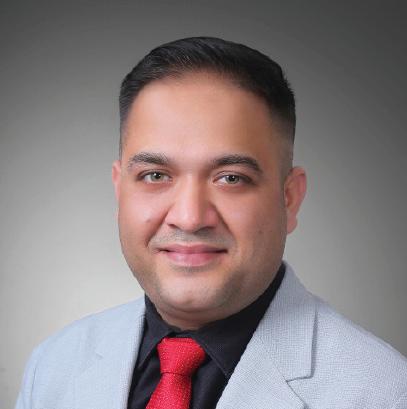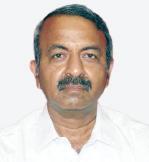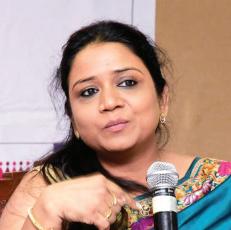

Illustrations for Calculating Disputed Tax under the Direct Tax Vivad Se



Illustrations for Calculating Disputed Tax under the Direct Tax Vivad Se
Calculating Disputed Tax under



The Finance (No. 2) Act of 2024 has reintroduced the Direct Tax Vivad Se Vishwas Scheme (DTVVS), aimed at accelerating the resolution of pending income-tax disputes. This reintroduction follows the initial rollout of the scheme in 2020. The DTVVS 2024 is designed to facilitate the settlement of appeals pending as of 22nd July, 2024, with significant modifications to enhance efficiency. Notably, the 2024 iteration applies exclusively to non-search cases and features a more defined scope of eligible appeals.
For those seeking to understand how to calculate the “disputed tax” under DTVVS 2024, this article provides practical examples. For comprehensive insights into the scheme’s features, eligibility criteria, and overall implications, refer to the comprehensive FAQs on the Direct Tax Vivad Se Vishwas Scheme, 2024 [2024] 166 Taxmann.com 748
The taxpayer is a resident individual whose age is less than 60 years. He filed the return of income for the assessment years 2018-19, 2019-20, and 2020-21. During the scrutiny assessment, the Assessing Officer (AO) made additions to the income declared in the return of income for all such assessment years. All additions have been affirmed by the CIT(A). However, in the further appeal, the ITAT deleted some additions and affirmed the remaining additions. The assessee and the revenue both filed appeals to the High Court, which are pending as of 22-07-2024. The appeals to the High Court for the assessment year 2018-19 were filed on or before 31-01-2020, and the appeals for the assessment years 2019-20 and 2020-21 were filed on or after 01-02-2020.
Further details are given below:
[2]
The AO made the following adjustments under Section 143(3)
• Additions made for unexplained cash credit under Section 68 [3]
• Disallowance made of cash payments under Section 40A(3) [4]
• Disallowance made for TDS default under Section 40(a)(ia) [5]
• Disallowance for excess payment made to relatives under Section 40A(2) [6]
made by AO [7 = 3 + 4 + 5 + 6]
[8 = 1 + 7]
Tax on assessed income
• Tax under Section 115BBE [9 = 3 * 77.25%/78%]1 • Tax on remaining income [10 = (8 – 3) * Applicable tax rate]
Total tax on assessed income [11 = 9 + 10]
under Section 234B/234C [12]
[13]
[14 = 11 + 12 + 13 - 2]
affirmed by CIT(A)
1 The effective rate under Section 115BBE for the AY 2018-19 is 77.25% (60% tax rate + 25% surcharge + 2% education cess + 1% Secondary and higher education cess). The effective rate under Section 115BBE for the AY 2019-20 and 2020-21 is 78% (60% tax rate + 25% surcharge + 4% health and education cess).
Addition affirmed or deleted by ITAT:
• Additions made for unexplained cash credit under Section 68 [15]
• Disallowance made of cash payments under Section 40A(3) [16]
• Disallowance made for TDS default under Section 40(a)(ia) [17]
• Disallowance for excess payment made to relatives under Section 40A(2) [18]
Total additions confirmed by the ITAT [19 = 15 + 16 + 17 + 18]
Total assessed income after ITAT’s order [20 = 1 + 19]
Tax on assessed income after ITAT’s order
• Tax under Section 115BBE [21 = 15 * 77.25%/78%]2
• Tax on remaining income [22 = (20 –15) * Applicable tax rate]
tax on assessed income after ITAT’s order [23 = 21 + 22]
Section 234B/234C [24]
[25]
Reconciliation of disputed tax amounts in appeal in HC by assessee and department with tax arrears as per the assessment order.
Deletions disputed by the department
• Additions made for unexplained cash credit under Section 68 [21]
• Disallowance made of cash payments under Section 40A(3) [22]
• Disallowance made for TDS default under Section 40(a)(ia) [23]
• Disallowance for excess payment made to relatives under Section 40A(2) [24]
2 The effective rate under Section 115BBE for the AY 2018-19 is 77.25% (60% tax rate + 25% surcharge + 2% education cess + 1% Secondary and higher education cess). The effective rate under Section 115BBE for the AY 2019-20 and 2020-21 is 78% (60% tax rate + 25% surcharge + 4% health and education cess).
Tax on deletions disputed by department
• Tax under Section 115BBE [25 = 21 * 77.25%/78%]3
• Tax on remaining income [26 = (22 + 23 + 24) * Applicable tax rate of 30.90% and 31.20] 4
[27 = 25 + 26]
Additions disputed by the assessee
• Additions made for unexplained cash credit under Section 68 [28]
• Disallowance made of cash payments under Section 40A(3) [29]
• Disallowance made for TDS default under Section 40(a)(ia) [30]
• Disallowance for excess payment made to relatives under Section 40A(2) [31]
[31A = 28 + 29 + 30 + 31]
Tax on additions disputed by the assessee
• Tax under Section 115BBE [32 = 28 * 77.25%/78%]5
• Tax on remaining income [33 = (29 + 30 + 31) * Applicable tax rate of 30.90% and 31.20] 6 -
The assessee has a choice to file a declaration with respect to his appeal, departmental appeal, or both. As the assessee and revenue have filed an appeal to the high court, the disputed income and tax shall be computed in the manner specified in Schedule VI and VII of Direct Tax Vivad se Vishwas Rules, 2024
3 The effective rate under Section 115BBE for the AY 2018-19 is 77.25% (60% tax rate + 25% surcharge + 2% education cess + 1% Secondary and higher education cess). The effective rate under Section 115BBE for the AY 2019-20 and 2020-21 is 78% (60% tax rate + 25% surcharge + 4% health and education cess).
4 The applicable tax rate for the assessment year 2018-19 shall be 30.90% (30% tax rate + 2% education cess + 1% Secondary and higher education cess). The applicable tax rate for the assessment year 2019-20 and 2020-21 shall be 31.20% (30% tax rate + 4% health and education cess).
5 The effective rate under Section 115BBE for the AY 2018-19 is 77.25% (60% tax rate + 25% surcharge + 2% education cess + 1% Secondary and higher education cess). The effective rate under Section 115BBE for the AY 2019-20 and 2020-21 is 78% (60% tax rate + 25% surcharge + 4% health and education cess).
6 The applicable tax rate for the assessment year 2018-19 shall be 30.90% (30% tax rate + 2% education cess + 1% Secondary and higher education cess). The applicable tax rate for the assessment year 2019-20 and 2020-21 shall be 31.20% (30% tax rate + 4% health and education cess).
In respect of the appeal/writ filed by the assessee and pending, it shall be computed as per Schedule VI under:
as per order against which appeal/ writ filed by the assessee [A = Amount specified in the above table at Sr. No. 20]
out of A [B = 31A]
Disputed tax in relation to disputed income at B [C = 34]
[D = 24]
Amount payable where a declaration under DTVSV is filed on or before 31-12-2024
• New appellant case [who has a pending appeal as on 22-07-2024, which has been filed on or after 01-02-2020] [G = C]
• Old appellant case [who has a pending appeal as on 22-07-2024, which has been filed on or before 31-01-2020 and is pending before the same appellate forum] [G = C * 1.1]
Amount payable where a declaration under DTVSV is filed on or after 01-01-2025
• New appellant case [who has a pending appeal as on 22-07-2024, which has been filed on or after 01-02-2020] [H = C * 1.1]
• Old appellant case [who has a pending appeal as on 22-07-2024, which has been filed on or before 31-01-2020 and is pending before the same appellate forum] [H = C * 1.2]
Net saving if the declaration is filed on or before 3112-2024 [I = F - G]
Net saving if the declaration is filed on or after 0101-2025 in respect of the assessee’s appeal/WP only [J = F – H]
In respect of the appeal/writ filed by the assessee, it shall be computed as per Schedule VII under:
Total income as per order against which appeal/ writ filed by the Department [A1 = Amount specified in the above table at Sr. No. 20]
income out of A [B1 = 24A]
Disputed tax in relation to disputed income at B calculated on a proportionate basis [C1 = 27]
Proportionate Interest charged on disputed tax [D1 = 12 – 24]
[E1 = 13 – 25]
Amount payable where a declaration under DTVSV is filed on or before 31-12-2024
• New appellant case [who has a pending appeal as on 22-07-2024, which has been filed on or after 01-02-2020] [G1 = C1 * 0.5]
• Old appellant case [who has a pending appeal as on 22-07-2024, which has been filed on or before 31-01-2020 and is pending before the same appellate forum] [G1 = C1 * 0.55]
Amount payable where a declaration under DTVSV is filed on or after 01-01-2025
• New appellant case [who has a pending appeal as on 22-07-2024, which has been filed on or after 01-02-2020] [H1 = C1 * 0.55]
• Old appellant case [who has a pending appeal as on 22-07-2024, which has been filed on or before 31-01-2020 and is pending before the same appellate forum] [H1 = C1 * 0.6]
Net saving if the declaration is filed on or before 31-12-2024 [I1 = F1 – G1]
Net saving if the declaration is filed on or after 01-01-2025 in respect of the assessee’s appeal/WP only [J1 = F1 – H1]
If the assessee opts to settle both his and departmental appeal/WP pending in the high court, the net savings will be as follows:
The amount payable in respect of the assessee’s appeal if paid on or before 31-12-2024 [T = G]
The amount payable in respect of the department’s appeal if paid on or before 31-12-2024 [U = G1]
[X = T +
Total savings if settled on or before 31-12-2024 [Y = S – X]
The amount payable in respect of the assessee’s appeal if paid on or after 01-01-2025 [T1 = H]
The amount payable in respect of the department’s appeal if paid on or after 01-01-2025 [U1 = H1]
amount payable [X1 = T1 + U1]
Total savings if settled on or after 01-01-2025 [Y1 = S – X1]
The taxpayer is a resident individual whose age is less than 60 years. He filed the return of income for the assessment years 2018-19, 2019-20, and 2020-21. During the scrutiny assessment, the Assessing Officer (AO) made additions to the income declared in the return of income for all such assessment years. All additions have been appealed against by the assessee to CIT(A) and are pending as of 22-07-2024. The appeals for the assessment year 2018-19 were filed on or before 31-01-2020, and the appeals for the assessment years 2019-20 and 2020-21 were filed on or after 01-02-2020.
Further details are given below.
[2]
The AO made the following adjustments under Section 143(3)
• Additions made for unexplained cash credit under Section 68 [3]
• Disallowance made of cash payments under Section 40A(3) [4]
• Disallowance made for TDS default under Section 40(a)(ia) [5]
• Disallowance for excess payment made to relatives under Section 40A(2) [6]
additions made by AO [7 = 3 + 4 + 5 + 6]
• Tax under Section 115BBE [9 = 3 * 77.25%/78%]7
• Tax on remaining income [10 = (8 – 3) * Applicable tax rate]
[11 = 9 +
7 The effective rate under Section 115BBE for the AY 2018-19 is 77.25% (60% tax rate + 25% surcharge + 2% education cess + 1% Secondary and higher education cess). The effective rate under Section 115BBE for the AY 2019-20 and 2020-21 is 78% (60% tax rate + 25% surcharge + 4% health and education cess).
Of the above additions, the following issues are covered in the assessee’s favour by ITAT decision in the assessee’s own case for the past year • Disallowance made for TDS default under Section 40(a)(ia) [17]
Where the assessee has filed an appeal to the CIT(A), the disputed income and tax shall be computed in the manner specified in Schedule I of Direct Tax Vivad se Vishwas Rules, 2024. It shall be computed as follows:
Total income as per order against which appeal/ writ filed by the assessee [A = Amount specified in the above table at Sr. No. 8]
Disputed income out of A [B = Amount specified in the above table at Sr. No. 7]
Disputed income relating to issues that have been decided in favour of the assessee in his case for any year by ITAT and not subsequently reversed by the high court [C = Amount specified in the above table at Sr. No. 17]
Disputed income relating to issues other than C [D = Amount specified in the above table at Sr. No. 3 + 4 + 6]
Tax effect of enhancement, if any, by JCIT(A)/CIT(A) [G]
The amount payable where a declaration under DTVSV is filed on or before 31-12-2024 by:
[L
The amount payable where a declaration under DTVSV is filed on or after 01-01-2025 by:
if the matter is settled under the scheme on or before 31-12-2024 [N = K - L]
Savings if the matter is settled under the scheme on or after 01-01-2025 [N = K - M]
An Indian holding company sold shares of its subsidiary company at a loss to its sister concern. The holding company sets off such losses against the capital gains arising from the transfer of land. The Assessing Officer (AO) considered the transaction a colourable device used to reduce the tax liability. The AO rejected the capital loss and recomputed the capital gains. The details of the transactions are as follows:
of transfer [3]
[1]
[2]
[4]
[5]
capital gain/(loss) [7 = 5 – 6]
capital gains from the sale of land [8] 8,00,000 8,00,000
long-term capital gains/loss [9 = 8 – 7] - 5,98,106
capital losses carried forward [10] (2,01,894) -
The assessing officer passed the assessment order and raised the demand order for the following:
[11]
Section 234B/234C [12]
Section 270A [13]
[14] 3,95,611
The company filed an appeal to CIT(A) against the assessment order but did not get any relief. The assessee then filed an appeal to the ITAT, which is pending adjudication as of 22nd July 2024.
Where the assessee and revenue filed an appeal to the ITAT, the disputed income and tax shall be computed in the manner as specified in Rule 9, read with Schedule XXVII-A of Direct Tax Vivad se Vishwas Rules, 2024. Rule 9 provides the following two options to the assessee to pay tax under this scheme on the disputed tax:
(a) Include the tax payable on the amount by which loss is reduced in the disputed tax and carry forward the loss by ignoring such amount of reduction in loss (Option 1) or
(b) Carry forward the reduced amount of loss. In this option, the assessee shall be liable to pay tax, along with interest, if any, as a consequence of carrying forward the reduced amount of loss in subsequent years (Option 2).
The tax implications in both scenarios under this scheme shall be computed as follows:
Loss computed by assessee [15 = as specified in Sr. No. 7A] (10,01,894) (10,01,894)
Loss computed by AO [16 = as specified in Sr. No. 7B] (2,01,894) (2,01,894)
Disputed loss [17 = 15 – 16] (8,00,000) (8,00,000)
Long-term capital gains in Option 1 [18 = 17] 8,00,000Long-term capital gains in Option 2 [19 = 17 - 16] - 5,98,106
Carried forward losses after exercising the option [20 = as specified in Sr. No. 7B] (2,01,894) -
disputed income [21 = 18 or 19] 8,00,000 5,98,106 Tax on disputed loss8 [22 = 21 * 20.8%] 1,66,400 1,24,406
Amount payable where a declaration under DTVSV is filed on or before 31-12-2024 [23 = 22] 1,66,400 1,24,406
Amount payable where a declaration under DTVSV is filed on or after 01-01-2025 [24 = 22 * 1.1] 1,83,040 1,36,847
Assume that the Company A earned the long-term capital gains of Rs. 1 lakh and Rs. 2 lakhs in the subsequent previous years 2022-23 and 2023-24, respectively
If Company A opts for Option 1 and files the declaration on or before 31-12-2024, Schedule XXVII-A to declare the disputed income and disputed tax in respect of the disputed losses shall be filed as follows:
8 It is assumed that no surcharge is levied on the income of Company A.
(It should be noted Part D of Form 1 provides that in case the appellant opts to pay tax as per Option 1, this Schedule cannot be filed. In this situation, it appears that the assessee is required to choose from the other relevant Schedules. However, a clarification from the CBDT in this regard may be required).
If Company A opts for Option 2 and files the declaration on or before 31-12-2024, Schedule XXVII-A to declare the disputed income and disputed tax in respect of the disputed losses shall be filed as follows:
* Company A shall be liable to pay interest under Section 234B and Section 234C on the additional tax payable in Option 2.
Notes:
(a) An assessee may settle only his pending appeal, departmental appeal, or both. However, if he wishes to settle his appeal, he has to settle all issues/ disputes covered by his appeal. He cannot pick and choose to settle some issues covered by his appeal and continue to litigate other issues. Likewise, if he wishes to settle a departmental appeal, he has to settle all issues/disputes covered by the departmental appeal. He cannot pick and choose to settle some issues/disputes covered by departmental appeal and continue to litigate other issues.
(b) The assessee can file one declaration only per order, which may cover only his appeal, departmental appeal, or both appeals.
(c) If the tax effect of departmental appeals is below the threshold amount fixed by CBDT for preferring appeal, the assessee may, if so advised, apply for dismissal of departmental appeal instead of settling the same under the scheme. Since the assessee cannot file multiple declarations, he may, if so advised, wait for the outcome of his application to the appellate forum for dismissal before deciding whether to settle the departmental appeal under the scheme.
(d) The above calculations are based on the author’s understanding of the scheme. It may be noted that the actual computation may vary depending on the utility to be made available by the department.


Founded 1972


Evolution

Expansion

From a small family business to a leading technology-oriented Publishing/Product company

Launch of Taxmann Advisory for personalized consulting solutions

Achieve perfection, skill, and accuracy in all endeavour

Evolution into a company with strong independent divisions: Research & Editorial, Production, Sales & Marketing, and Technology

Future
Continuously providing practical solutions through Taxmann Advisory
Editorial and Research Division
Over 200 motivated legal professionals (Lawyers, Chartered Accountants, Company Secretaries)
Monitoring and processing developments in judicial, administrative, and legislative fields with unparalleled skill and accuracy
Helping businesses navigate complex tax and regulatory requirements with ease

Over 60 years of domain knowledge and trust
Technology-driven solutions for modern challenges
Ensuring perfection, skill, and accuracy in every solution provided
Income Tax
Corporate Tax Advisory
Trusts & NGO Consultancy
TDS Advisory
Global Mobility Services
Personal Taxation
Training Due Diligence
Due Dilligence
Advisory Services
Assistance in compounding of offences
Transactions Services
Investment outside India
Goods
Transaction Advisory
Business Restructuring
Classification & Rate Advisory
Due Diligence
Training
Trade Facilitation Measures
Corporate
Corporate Structuring
VAT Advisory
Residential Status

Naveen Wadhwa
Research and Advisory [Corporate and Personal Tax]
Chartered Accountant (All India 24th Rank)
14+ years of experience in Income tax and International Tax
Expertise across real estate, technology, publication, education, hospitality, and manufacturing sectors
Contributor to renowned media outlets on tax issues

Vinod K. Singhania Expert on Panel | Research and Advisory (Direct Tax)
Over 35 years of experience in tax laws
PhD in Corporate Economics and Legislation
Author and resource person in 800+ seminars

V.S. Datey Expert on Panel | Research and Advisory [Indirect Tax]
Holds 30+ years of experience
Engaged in consulting and training professionals on Indirect Taxation
A regular speaker at various industry forums, associations and industry workshops
Author of various books on Indirect Taxation used by professionals and Department officials

Manoj Fogla Expert on Panel | Research and Advisory [Charitable Trusts and NGOs]
Over three decades of practising experience on tax, legal and regulatory aspects of NPOs and Charitable Institutions
Law practitioner, a fellow member of the Institute of Chartered Accountants of India and also holds a Master's degree in Philosophy
PhD from Utkal University, Doctoral Research on Social Accountability Standards for NPOs
Author of several best-selling books for professionals, including the recent one titled 'Trust and NGO's Ready Reckoner' by Taxmann
Drafted publications for The Institute of Chartered Accountants of India, New Delhi, such as FAQs on GST for NPOs & FAQs on FCRA for NPOs.
Has been a faculty and resource person at various national and international forums

the UAE
Chartered Accountant (All India 36th Rank)
Has previously worked with the KPMG

S.S. Gupta Expert on Panel | Research and Advisory [Indirect Tax]
Chartered Accountant and Cost & Works Accountant
34+ Years of Experience in Indirect Taxation
Bestowed with numerous prestigious scholarships and prizes
Author of the book GST – How to Meet Your Obligations', which is widely referred to by Trade and Industry

Sudha G. Bhushan Expert on Panel | Research and Advisory [FEMA]
20+ Years of experience
Advisor to many Banks and MNCs
Experience in FDI and FEMA Advisory
Authored more than seven best-selling books
Provides training on FEMA to professionals
Experience in many sectors, including banking, fertilisers, and chemical
Has previously worked with Deloitte
Taxmann Delhi
59/32, New Rohtak Road
New Delhi – 110005 | India
Phone | 011 45562222
Email | sales@taxmann.com
Taxmann Mumbai
35, Bodke Building, Ground Floor, M.G. Road, Mulund (West), Opp. Mulund Railway Station Mumbai – 400080 | Maharashtra | India
Phone | +91 93222 47686
Email | sales.mumbai@taxmann.com
Taxmann Pune
Office No. 14, First Floor, Prestige Point, 283 Shukrwar Peth, Bajirao Road, Opp. Chinchechi Talim, Pune – 411002 | Maharashtra | India
Phone | +91 98224 11811
Email | sales.pune@taxmann.com
Taxmann Ahmedabad
7, Abhinav Arcade, Ground Floor, Pritam Nagar Paldi
Ahmedabad – 380007 | Gujarat | India
Phone: +91 99099 84900
Email: sales.ahmedabad@taxmann.com
Taxmann Hyderabad
4-1-369 Indralok Commercial Complex Shop No. 15/1 – Ground Floor, Reddy Hostel Lane Abids Hyderabad – 500001 | Telangana | India
Phone | +91 93910 41461
Email | sales.hyderabad@taxmann.com
Taxmann Chennai No. 26, 2, Rajan St, Rama Kamath Puram, T. Nagar
Chennai – 600017 | Tamil Nadu | India
Phone | +91 89390 09948
Email | sales.chennai@taxmann.com
www.taxmann.com
Taxmann Bengaluru
12/1, Nirmal Nivas, Ground Floor, 4th Cross, Gandhi Nagar
Bengaluru – 560009 | Karnataka | India
Phone | +91 99869 50066
Email | sales.bengaluru@taxmann.com
Taxmann Kolkata Nigam Centre, 155-Lenin Sarani, Wellington, 2nd Floor, Room No. 213
Kolkata – 700013 | West Bengal | India
Phone | +91 98300 71313
Email | sales.kolkata@taxmann.com
Taxmann Lucknow
House No. LIG – 4/40, Sector – H, Jankipuram Lucknow – 226021 | Uttar Pradesh | India
Phone | +91 97924 23987
Email | sales.lucknow@taxmann.com
Taxmann Bhubaneswar
Plot No. 591, Nayapalli, Near Damayanti Apartments
Bhubaneswar – 751012 | Odisha | India
Phone | +91 99370 71353
Email | sales.bhubaneswar@taxmann.com
Taxmann Guwahati
House No. 2, Samnaay Path, Sawauchi Dakshin Gaon Road
Guwahati – 781040 | Assam | India
Phone | +91 70866 24504
Email | sales.guwahati@taxmann.com